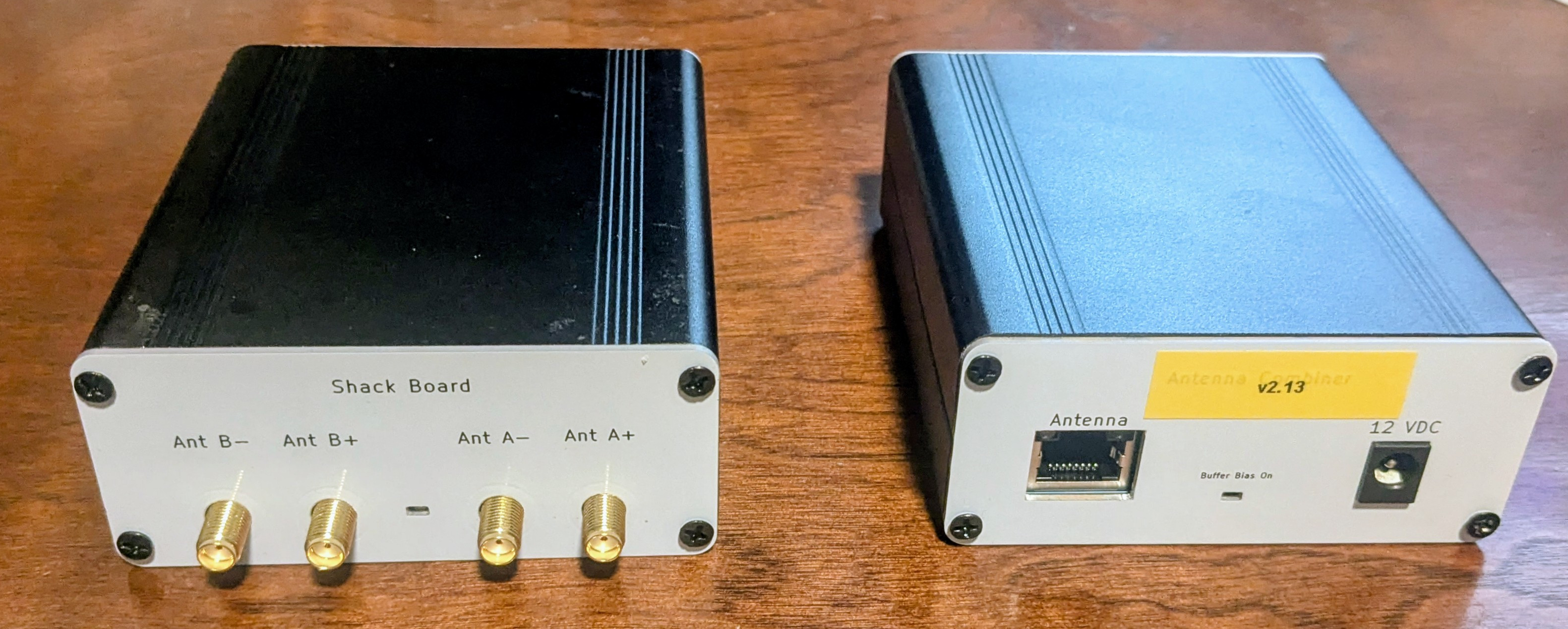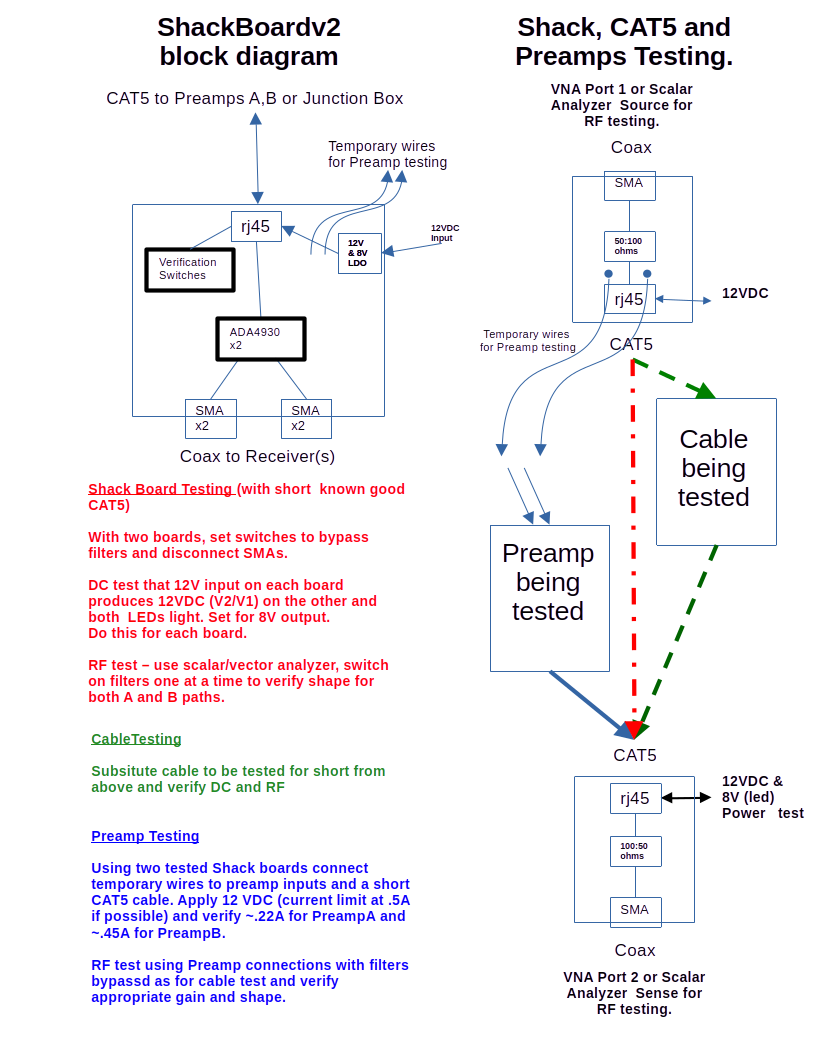ShackBoard v2
Features
Utility Mode
- widest frequency coverage, 300 Hz to 300 MHz usable bandwidth
- Dual outputs for each A and B CAT5 pair
- -3 dB conversion gain for each output
- typically -140 dBm (20nV/rt-Hz) noise floor
Performance Mode when used with external antiphase combiner
- lowest noise, typically -154 dBm (4nV/rt-Hz) or lower noise floor
- Single output from anti-phase combiner (required) for each A and B CAT5 pair
- 0 dB conversion gain for each output
- frequency coverage depends upon combiner, 10 kHz to 300 MHz typical



Testing

Use
In addition to its main function of supplying power to Preamps and receiving differential RF over CAT5 cable and delivering the results to a receiver, this board also has a switch to disconnect the 12V supply from the input circuits of a probe preamplifier while leaving output stages operative. This allows identifying common mode and other unwanted noise ingress apart from the intended balanced antenna. A better method is to simply short the dipole elements but this is not always possible or convenient so simply disabling the input high impedance OpAmps is useful to verify a system.
|
||||
Item Description |
Provider |
Source Code |
Notes |
Approximate Material Cost(excludes setup fees and shipping) |
Assembled ShackBoardv2 PCB |
Download ShackBoardv2 Kit Files==> JLCPCB |
Download ShackBoardv2 Source Files==> KiCad |
|
US$ |
38x88x100mm Clam Shell Enclosure |
eBay |
Other sources possible. Enclosure needs to accept 84mm wide PCB. | US$12 |
|
38x88mm ShackBoardv2 Front Panel |
Download ShackBoardv2 Front Panel Kit Files==> JLCPCB |
Download ShackBoardv2 Front Panel Source Files |
Select 'Aluminum" when ordering.
These are panels only no components. |
US$1 |
38x88mm ShackBoardv2 Rear Panel |
Download ShackBoardv2 Rear Panel Kit Files ==> JLCPCB |
Download ShackBoardv2 Rear Panel Source Files |
Select 'Aluminum" when ordering. These are panels only no components. | US$1 |
Donations
gratefully received
© 2025 n6gn